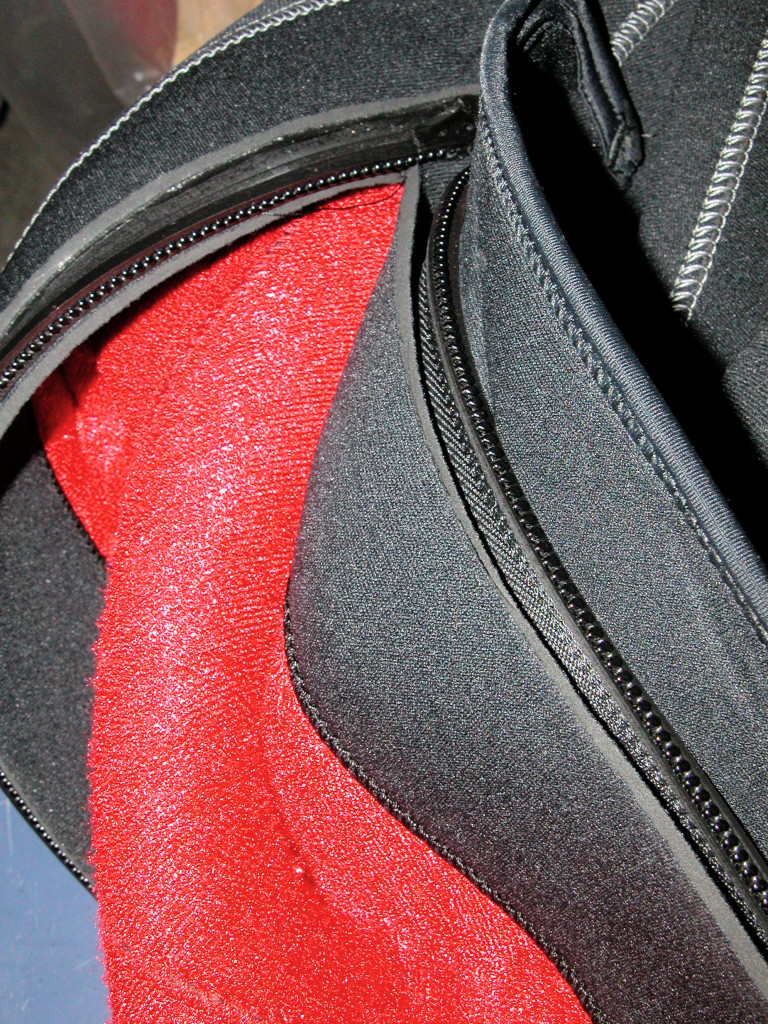How do wetsuits work? Water can conduct heat away from the body 20 times faster than air. Without delving too deeply into the science, this is because water is much more molecularly dense than air, and all those molecules packed together in a small space make water far more efficient at conducting heat. So even when you’re diving in tropical water, you’ll notice that after some time, you’ll start to feel cold, which is why most of us require some degree of exposure suit.
Exposure suits run the gamut from rashies to drysuits, but the most common is the wetsuit, which itself can be anywhere from 1mm to 7mm thick. Hugh Bradner, a physicist at the University of California-Berkeley, invented the wetsuit in 1952, although the main element of a wetsuit is neoprene, which was first developed by DuPont in 1931. Today, 300,000 tons of neoprene are produced annually.
So what exactly is neoprene? It’s a synthetic rubber that contains nitrogen bubbles, which help reduce heat convection, much like feathers in down jackets or layers of clothing on a cold day. Today, most wetsuits are constructed of not just neoprene but also many other materials. The more expensive suits might contain a layer of thin metal to reflect your body heat back inside. The outer layer might be made of abrasion-proof material to help the suit survive the rigors of diving; and the inside might have a fleecy fabric to make the suit more comfortable.
Among divers, the most popular suits are 3, 5 and 7mm, depending on the water temperature. Along with the thickness, divers have a range of different styles to choose from. The most common are:
- Shorty: These suits are often only 3mm thick and while they cover your arms, do not cover your entire legs. They’re usually only used in tropical waters 81 F (27 C) and warmer.
- One-piece full-suit: This is the most common wetsuit, available in 3, 5 or 7mm.
- Two-piece: These often consist of a long-john or farmer-john bottom and have a full-length jacket over the the top, often with a hood.
- Semi-dry: These wetsuits are pretty much the same as the one-piece suits, but with much better seals and zips to prevent water from entering and leaving the suit.
And how does it work? A small amount of water enters the suit as you giant stride into the ocean. This water sits between the neoprene suit and your skin, warming via your body heat. There’s a long-held myth that this is actually what keeps you warm, and while it certainly plays a part, so do all the other layers of the suit. This is why there are so many different thicknesses of suits for different water temperatures. Having said that, if you have a loose-fitting suit and you continually flush it with cold water then you will certainly feel the cold much quicker, as you lose body heat with each successive flush. Keep that in mind the next time you pee in your wetsuit, friends.
The post How Wetsuits Work appeared first on Scuba Diver Life.
